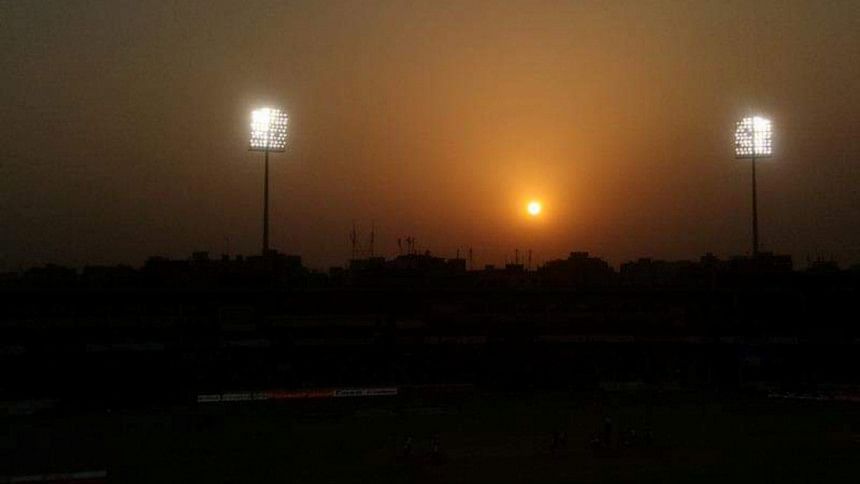Powering progress through clean energy

Imagine a 187-feet tall tower with a 55-tonne steel dome on top. At first, it seems like a structure from a future base on the planet Mars. But the Wardenclyffe Tower is not an abstraction from the future. It was built in 1901 in New York by Nikola Tesla—a towering figure in wireless power transmission. Initially, Tesla planned to utilise the tower to transmit messages across the Atlantic Ocean and also to ships at sea. However, when he read about Guglielmo Marconi transmitting radio signals over the horizon, Tesla made a change of plans. Tesla decided to scale up the Wardenclyffe Tower for wireless transmission of electricity. While the electricity itself would have to be produced at some expense, Tesla's vision was to transmit the power for free by creating a channel between the Earth and the ionosphere for anyone to tap into. Tesla believed that he could wirelessly transmit electricity worldwide by creating ripples that spread through the Earth and could be detected at great distances by receiving circuits.
Unfortunately, Tesla's main financier, JP Morgan, was petrified at the notion of transmitting electricity for free instead of making a fortune in the power transmission business. Morgan refused to provide the additional funds required for upscaling Wardenclyffe Tower, and Tesla was compelled to abandon the project altogether. If Tesla's radical ideas had been executed, then billions of people could have been provided with electricity without the need for spending trillions of dollars in power transmission infrastructure.
The Sustainable Development Goal (SDG) 7 reiterates Tesla's vision of affordable and clean energy, albeit with wires attached. SDG target 7.1 calls upon countries to ensure universal access to affordable, reliable and modern energy services by 2030.
Access to electricity in Bangladesh has increased rapidly in the past two decades. Data from the World Bank's Sustainable Energy for All database show that only 8.5 percent of the population had access to electricity in 1990, whereas 75.9 percent of the population had access to electricity in 2016. The rural-urban divide in energy access has also been reduced. In 1991, access to electricity was 53.5 percent lower in rural areas compared to urban areas; however, in 2016, this difference decreased to 25.1 percent. Therefore, the short-term and long-term measures that have been adopted by the government over the years, such as importing power and increasing installed capacity, have succeeded in bringing electricity to more households in Bangladesh than ever before. Thus, the government has given power to the people, just like the people have given power to the government.
However, increased access to electricity in Bangladesh was provided mainly through power generated by fossil fuels. In 2018, natural gas was used to generate 63.51 percent of all electricity in Bangladesh, while hydroelectric and solar power generated only 1.63 percent and 0.01 percent electricity respectively. This means that electricity generated from renewable sources was less than 2 percent of the total electricity output in 2018, and it is unlikely that Bangladesh will be able to meet the target of generating 10 percent electricity from renewable energy sources by 2020 that was put forward in the Renewable Energy Policy of Bangladesh. Although the dependence on natural gas for power generation has decreased over the years, it has been substituted by power generation through furnace oil and power imports, instead of increased power generation using renewable energy sources. Indeed, renewable energy output in Bangladesh has fallen from 3.44 percent of total electricity output in 1995 to 1.22 percent in 2015.
It is quite appalling that the Power System Master Plan 2016 outlines the intention to increase power generation from coal from 1.6 percent in 2017 to 35 percent in 2030, as a strategy for diversifying the fuel mix for electricity generation. This is despite the fact that the cost of manufacturing solar photo-voltaic cells is falling, making them more economically feasible. Levelised cost of electricity is defined as the average cost of electricity for every unit of electricity generated over the lifetime of a project, at the point of inter-connection. Research has shown that the levelised cost of electricity generation from utility-scale solar photo-voltaic power plants in Bangladesh is USD 91 per Mega Watt hour (MWh), compared to USD 110 per MWh for coal. Nevertheless, the enormous potential of utility-scale solar photo-voltaic power plants has hitherto remained largely unexplored, and solar power in Bangladesh has been relegated to roof-top solar panels which are inadequate for meeting urban energy demand.
Even though Bangladesh has come a long way, ensuring accessibility, availability and affordability of clean energy for everyone still remains a formidable task. The power and energy sector of Bangladesh is confronting a number of key challenges. There are concerns of cost over-run, time over-run and low levels of efficiency in certain power and energy projects. Lack of transparency regarding natural gas reserves and impediments in natural gas exploration are depriving the country of potentially vast energy sources. Lack of good governance means that consumers ultimately bear the burden of inefficiencies in the power and energy sectors in the form of higher prices. These issues need to be addressed urgently in order to make sure that Bangladesh can achieve SDG 7 by 2030.
Syed Yusuf Saadat is a Senior Research Associate at the Centre for Policy Dialogue (CPD).

 For all latest news, follow The Daily Star's Google News channel.
For all latest news, follow The Daily Star's Google News channel. 



Comments